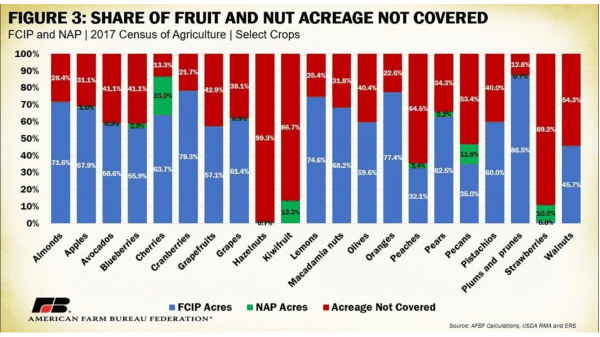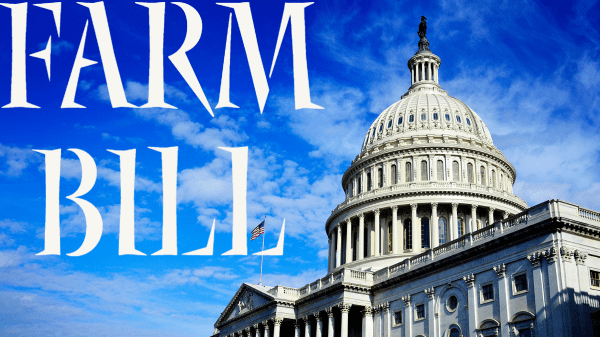I can’t help of thinking of some scene in one of those old CBS rural sitcoms.
A bunch of guys in overalls are sitting around the Cracker Barrel. One of them sits up and says, “Wal, I reckon it’s time to talk about the farm bill.”
Although this little scene has nothing to do with reality, it is actually time to discuss the coming farm bill of 2023, as the one from 2018 is due to expire.


Farm bills, which outline federal policy toward agriculture, including price supports and the food stamp program, tend to address specialty crops only incidentally: the large commodities—principally grains and soybeans—get the vast amount of attention.
This time it’s a bit different.
There is talk about expanding specialty crop coverage in the coming legislation.
It’s insurance, and therefore, it’s complicated. But essentially there are two kinds: the Federal Crop Insurance Program (FCIP), which covers losses due to a number of conditions, including bad weather (hail, frost, freeze, etc.), fire, insects, and plant disease.
Then there’s the Noninsured Crop Disaster Assistance Program (sometimes abbreviated as NAP), which insures against natural disasters only.
Generally, specialty crop growers have fairly few risk management options because they have more specialized requirements for technical assistance, market program, and disease and pest management.
Growers of fruits and vegetables do use federal crop insurance programs. California is at the top of the number of policies sold (nearly 23,000): almonds, grapes, oranges, and walnuts are at the top of commodities covered, writes Daniel Munch, associate economist, American Farm Bureau Federation. Farm bill considers specialty crops (agupdate.com)
Nevertheless, there are huge gaps. For major fruit and nut crops, an average of 43 percent of acres remain uncovered through the Federal Crop Insurance Program or the Noninsured Crop Disaster Assistance Program. For vegetables, the average uncovered share moves to 47 percent, according to Munch.


Of fruit crops, 89 percent of strawberry acres, 87 percent of kiwifruit acres, and 65 percent of peach acres have no crop insurance coverage of any kind.
Of vegetables, lettuce crops—nearly 100 percent—are almost completely uncovered by insurance; 66 percent of cabbage acres, 64 percent of pepper acres, and 61 percent of squash acres are also completely uninsured.


Low coverage for strawberries and lettuce may be related to the highly centralized production of these crops: coverage is excluded from any operation whose total adjusted gross farm income exceeds $900,000.
Even with this cursory analysis, “the magnitude of risk that remains for specialty-crop producers is revealed,” writes Munch. “The lack of data and information in thinly sold specialty-crop markets remains a strong barrier to the design of effective products, especially those outside the scope of direct disaster losses.”
A report issued in September 2022 by USDA’s Economic Research Service (ERS) concluded that nine specialty crop growers interviewed “knew little about FCIP. . . . These farmers reported the most significant barriers to purchasing crop insurance were the application process and limited time available due to farming and marketing commitments.”
It remains to be seen whether federal insurance programs can be tailored in ways that are specific enough to benefit the growers of these highly diverse crops.



